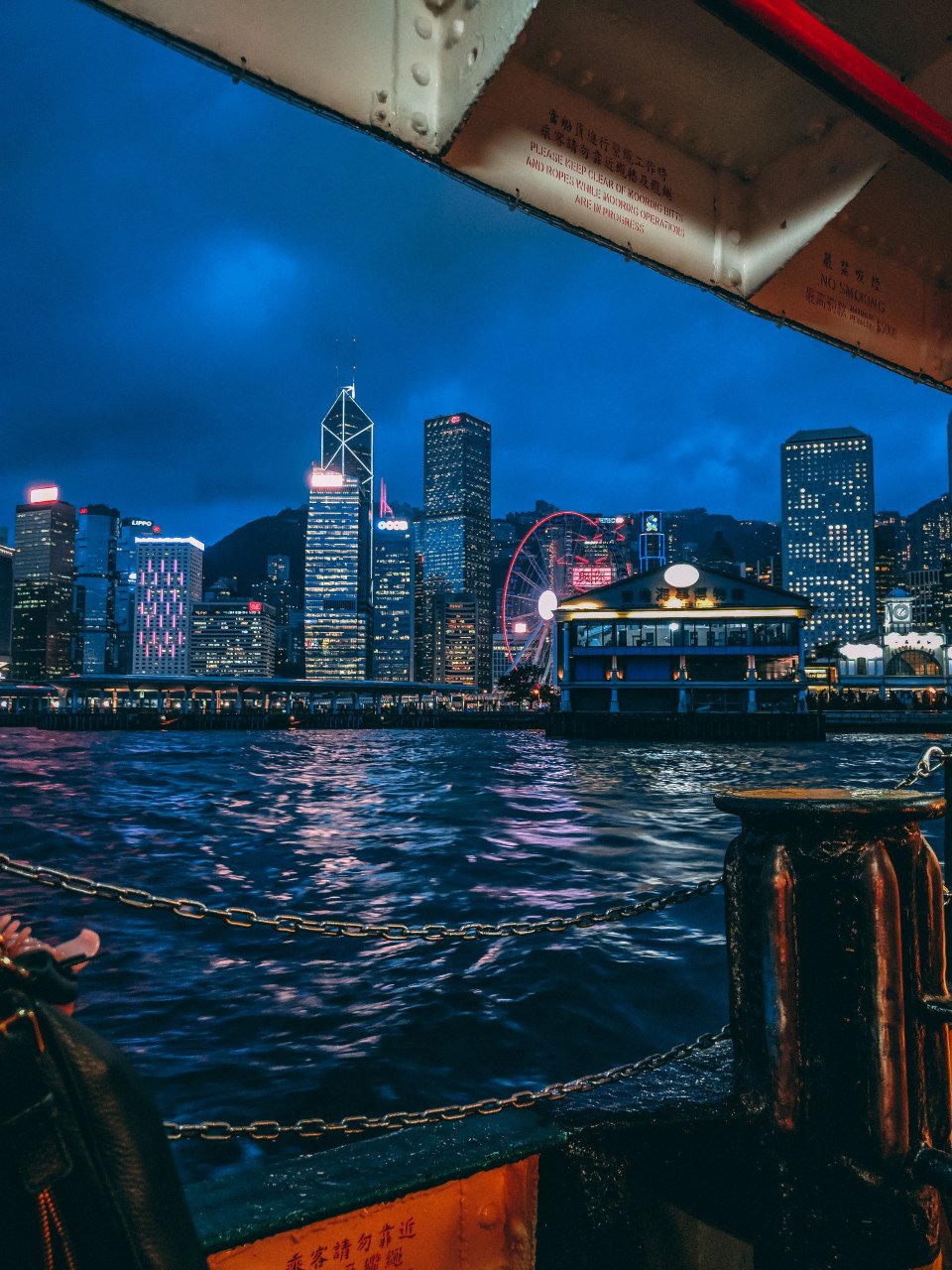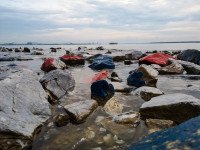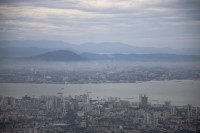Want to add a hotel stay or change your flights?
Just call our team of cruise specialists to help build your dream cruise holiday today!
Prices based on 2 people sharing. Cruise only price does not include flights. Fly-cruise price may vary by chosen UK airport.
(Prices correct as of today’s date, are updated daily, are subject to change and represent genuine availability at time of update).
Cruise only holidays are financially protected by ABTA. Fly cruise holidays are financially protected by Cunard Line under ATOL number 6294
Please click here to check the essential travel requirements before booking this cruise.
Itinerary



Hong Kong
The Hong Kong Island skyline, with its ever-growing number of skyscrapers, speaks to ambition and money. Paris, London, even New York were centuries in the making, while Hong Kong's towers, bright lights, and glitzy shopping emporia weren't yet part of the urban scene when many of the... Read More
Hong Kong
At Sea
At Sea
Phu My
At Sea
Singapore
Singapore
Port Klang
Georgetown, Penang
At Sea
At Sea
At Sea
At Sea
At Sea
At Sea
Mauritius
At Sea
At Sea
At Sea
Durban
At Sea
At Sea
Cape Town
Cape Town
What's Included with
Cunard Line
Sail in luxury onboard a Cunard Cruise ship. With butler service available in all suits you can sit back and relax. You’ll find all the essentials onboard, allowing you to have the rejuvenating holiday you wanted.
Breakfast, lunch, dinner and snacks in a choice of included dining venues
Use of swimming pools, hot tubs, fitness centre and leisure facilities where available
Tea and coffee in seleted venues
Butler service in all suites
Shuttle service to and from ports and airport where available
Explore Queen Anne





Britannia
Our main restaurant invites you to dine on a wide range of dishes in effortless style and comfort.
With white-gloved waiters, linen-dressed tables, a sweeping staircase, and a balcony style mezzanine, the grandeur of the Britannia Restaurant provides an authentic sense of occasion. On Gala Evenings, the atmosphere is heightened further as guests are invited to dress in their finest evening wear.
The five course evening menu changes daily and features a tempting array of British and regional cuisine, from smoked salmon and spring lamb to Indonesian chicken and papaya salad.
The breakfast menu offers a variety of fresh juice, pastries and cereals as well as a full selection of hot favourites cooked to order. Lunch can be as simple or as extravagant as you like, with a four course menu of appetisers, salads and more substantial entrées like pasta classics or fragrant curries.
All meals here are included in your fare. When you book your voyage on a Cunard Fare, you'll be invited to select a dining option. Choose from our standard set times of Early or Late Dining, or enjoy the freedom to dine at your convenience with Open Dining, where you can make a reservation at a time that suits you.
If you choose Open Dining, there are two options once on board:
Visit the Britannia Restaurant in person to request a table, where you can choose to dine with your party or share a table with fellow guests. During peak times if your requested table size is not available, you will be offered a pager, so you can relax with a pre-dinner drink or perhaps take in some entertainment while you wait.
Alternatively, you can check availability via My Voyage, where you can book in advance or join a live virtual queue and keep track of how many people are ahead of you.
For breakfast and lunch, simply refer to your Daily Programme for opening times and visit the restaurant at your convenience.
During the day, the relaxed ambience of the Britannia Restaurant has a dress code to match, while after 6.00pm it’s smart attire, and dress to impress on our much-anticipated Gala evenings.
Gluten free and vegetarian dishes are available. If you have any food allergies or other dietary requirements, please inform us by phone after booking your voyage. Find out more about dietary requirements on board or browse our FAQs.






Grand Lobby Boutiques

The Pavilion Wellness Studio
Feel radiant from the inside out, with a rejuvenating spa treatment inspired by the oceans on which our ships sail.
Our on board spa, Mareel® Wellness & Beauty, offers a calming sanctuary to escape the stresses and strains of everyday life, with experiences that revive, refresh, and transform.
From the soft and relaxing to the stimulating and energizing, time spent at our Mareel spa is sure to leave you feeling uplifted and renewed.
To give you a real sense of holiday and escapism on your voyage, you can book a spa treatment before you embark. Choose from our stunning selection of treatments on My Cunard up to six months before you sail, and enjoy the added peace of mind that comes from knowing this little indulgence is ready and waiting for you.
Deck 14

- Paddle Tennis
- Toilet
- Table Tennis
- Putting Green
- Bar
Deck 12

- The Zone Outdoor Play
- The Zone
- Library
- Commodore Club
- Bar
- Toilet
- Boardroom
- Admiral's Lounge
- Churchill's
Deck 11

- Wellness Studio
- Toilet
- Grills Terrace
- Sun Bar
- Standard Inside Stateroom
- Balcony Stateroom
- Deluxe Oceanview
- Queen Suites
Deck 10

- Standard Inside Stateroom
- Balcony Stateroom
- Deluxe Oceanview Stateroom
- Queen Suites
Deck 9

- Al Fresco Dining
- Bar
- Mediterranean Restaurant
- Indian Restaurant
- Toilet
- Gelateria
- Grill
- The Pavilion
- Standard Inside Stateroom
- Oceanview Stateroom
- Balcony Stateroom
- Queen Suite
Deck 8

- Standard Inside Stateroom
- Balcony Stateroom
- Princess Suite
- Queen Suite
Deck 7

- Standard Inside Stateroom
- Balcony Stateroom
- Club Balcony Stateroom
- Queen Suite
Deck 6

- Standard Inside Stateroom
- Balcony Stateroom
- Club Balcony Stateroom
- Queen Suite
- Princess Suite
- Grand Suite
- Master Suite
- Penthouse
Deck 5

- Standard Inside Stateroom
- Balcony Stateroom
- Club Balcony Stateroom
- Penthouse
- Princess Suite
- Master Suite
- Queen Suite
Deck 4

- Standard Inside Stateroom
- Oceanview Stateroom
- Balcony Stateroom
- Princess Suite
- Queen Suite
Deck 3

- Britannia Restaurant
- Toilet
- Photography Centre
- Grand Lobby Boutiques
- Carinthia Lounge
- Bar
- Boutiques
- Queens Rooms
- Promenade Deck
- Royal Court Theatre
Deck 2

- Royal Court Theatre
- Beauty Salon
- Bar
- Golden Lion
- Beauty Salon
- Queens Room
- Voyage Sales Shore Experiences
- Grand Lobby
- Britannia Club
- Chart Room
- The Gallery
Deck 1

- Changing Rooms
- Fitness Centre
- Relaxation Lounge
- Spa Treatment Rooms
- Embarkation
- Spa Reception
- Studio
- Thermal Suite
- Standard Inside Stateroom
- Oceanview Stateroom
- Deluxe Oceanview Stateroom
- Purser's Office
- Games Room
- Drawing Room
- Grand Lobby
Queen Anne Cabins & Suites

Britannia Inside



Britannia Oceanview Deluxe



Britannia Club Balcony




































-large_thumb.jpg)





-large_thumb.jpg)